Dean of Students’s Message
Dear parents,
One of the most beautiful patterns of Jesus’ behavior in the Gospels is his commitment to meet people where they are at and his heart to meet their needs in a manner that inspires them towards growth. He simply refused to let people remain in their present state. He was also consistent in his challenge that people move beyond their weaknesses and sins as a means of finding God as their ultimate source of strength and refuge. This can be seen in countless interactions but also through the many parables he told.
As educators in a Christian school like SPH, the character and approach of Jesus places an important challenge upon us and this could not be felt more strongly than within our Student Services department. The very nature of student support demands that we meet student needs right where they are at. Some students struggle academically. Some struggle behaviorally. Others can struggle socially and emotionally. Identifying student needs is an important first step, but more importantly, how we choose to support students in a manner that brings about their highest potential.

When dealing with children, one thing that both teachers and parents can forget is how it might feel for them to be judged for not measuring up to the standards placed upon them. In this way, our words and our actions can be just as important as the actual support we provide. Again, Jesus’ own teachings demonstrate the important and delicate balance of identifying weakness but also doing so in a manner that is gracious, loving and relational. Is this how we deal with our students or with our children?
As we all partner together with the goal of serving the children in our community, might we be challenged by Jesus’ own model of love. Where might we do better? How might we serve better?
VOL. 15 MAR 2023
SEKOLAH PELITA HARAPAN
JUNIOR SCHOOL EAGLE EYE
Mr. Brock Haylock
Will you be my Valentine?
Valentine’s Day gave our K1 students and parents a terrific opportunity to celebrate love in a special way! We invited Moms and Dads to come to school and spend quality time with their children. We started the event with a delicious potluck prepared by each family, followed by a heart-warming performance by our K1 students singing their hearts out to the song of Skidimarink.


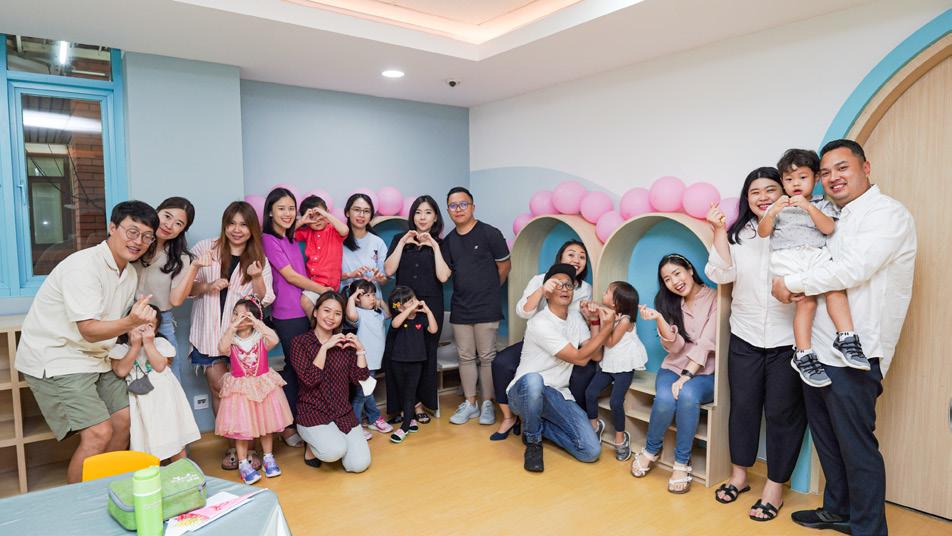

Our teachers then invited everyone to play some fun Valentine's games to bring the families together. The first Valentine’s game we played was Freeze Dance. When it was time to freeze, our students had to run to their mom or dad for a frozen hug. Our second game was The Floor is Lava. Moms and dads had to save their children from the lava by picking them up from the floor as high as they could! To top it off, our students had the opportunity to be their parents’ personal grooming helpers. They each had a blast applying lipstick on mom’s lips and styling dad’s hair. They surely gave their best effort to help mom and dad look good. Words cannot possibly describe all the love that filled the air on that day!
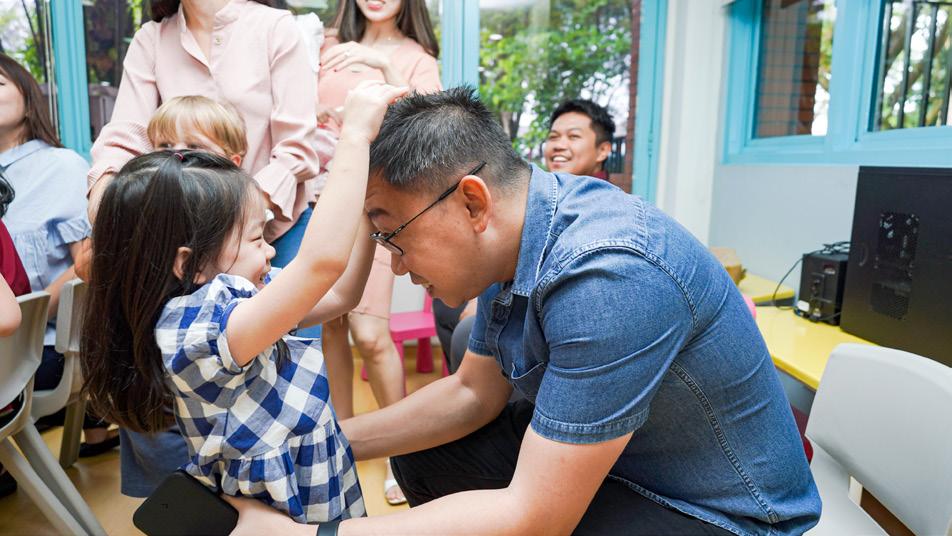
Kindy 1
By Ibu Anna Purba
What Plants give for us?
Sharing the planet theme is interesting! K2 students have been exploring how plants play a role in their lives. Firstly, they have learned and experienced that plants give them healthy and tasty food by making bibimbap and gado-gado out of vegetables and cutting and eating their favorite fruits. Not only did they consume the product from plants to maintain health, but they also learned that they could enjoy plants by making flower arrangements. They were so glad to see and touch the texture of the flowers, excited to arrange them and share the flower arrangements with their mommies as gifts. Recently, they learned that they could get wood from the trees to make many things like shelters, pencils, tissues, and money. They also had a chance to visit the SPH-LV Wood Technology section to see various things that can be made from wood.

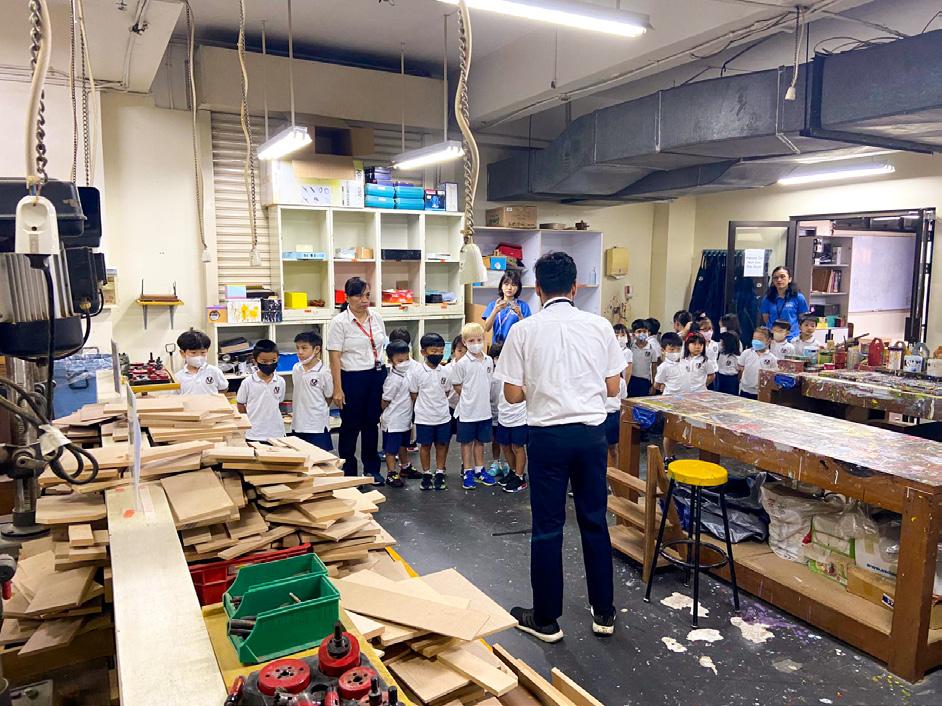
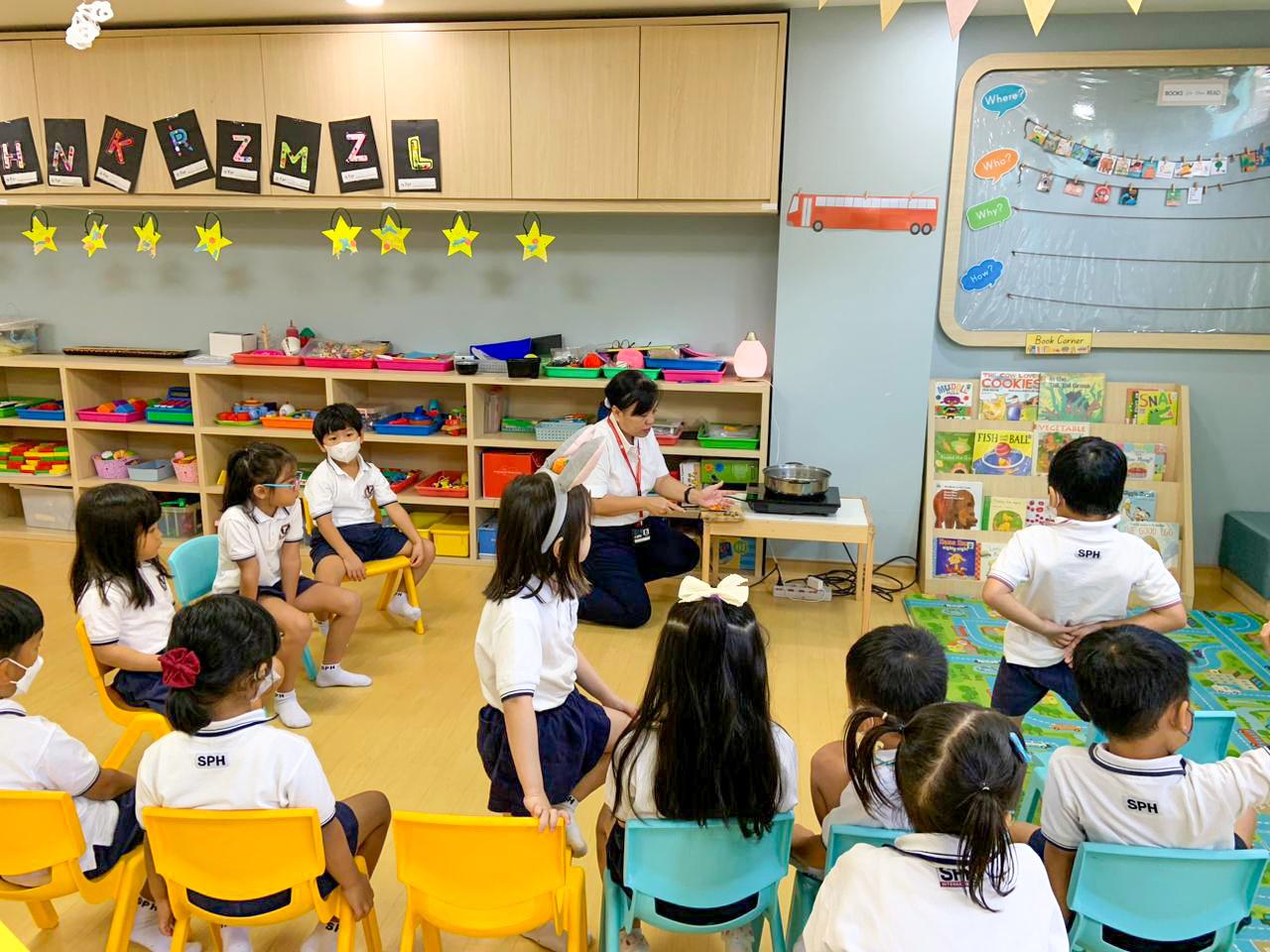

In the seventh week of this term, K2 students tried different kinds of drinks. You should see their facial expressions when tasting herbal drinks and a diverse range of tea: rose tea, corn tea, chamomile tea, and ginger tea! On top of that, their field trip to Beth Shalom gave them first-hand experience harvesting fresh vegetables from the field. How awesome our God is, the creator of all amazing plants! They do have a lot of fun things to do this term!
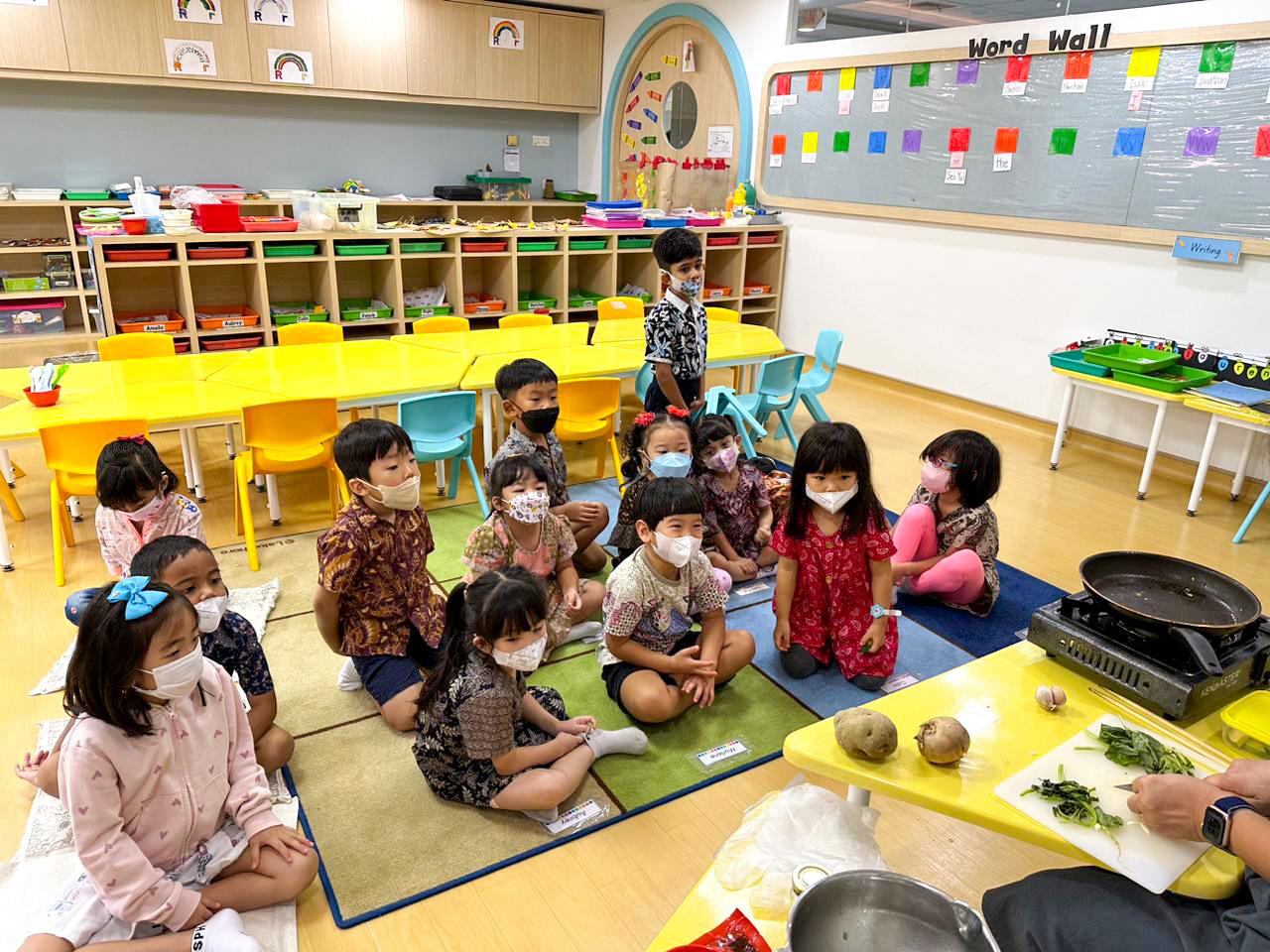
Kindy 2 3
by Ibu Clairine Theodora
Fun Field Trip
To BFC
This term, K3’s unit “How The World Works” focuses on how living things go through a process of change.
We spent time learning outside the class through a field trip to Bintaro Farm Center (BFC). We learned about the cycle of living things, the observable changes, also the similarities and differences of living things.
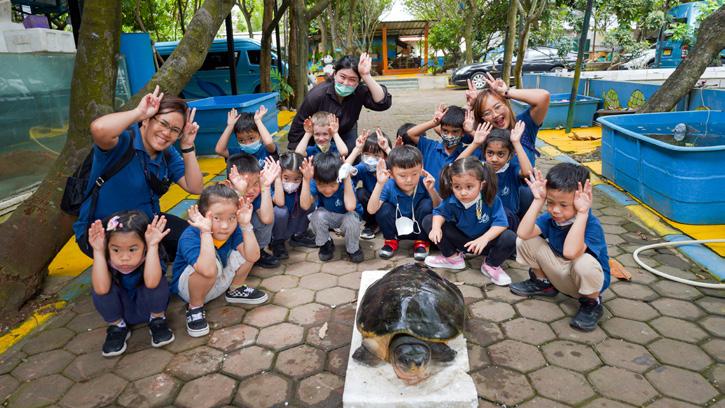

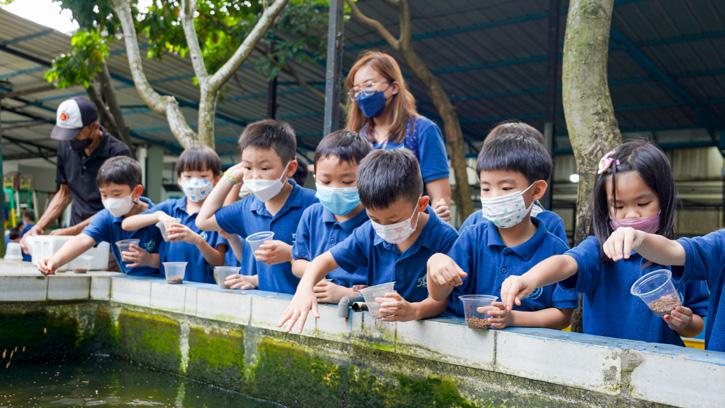


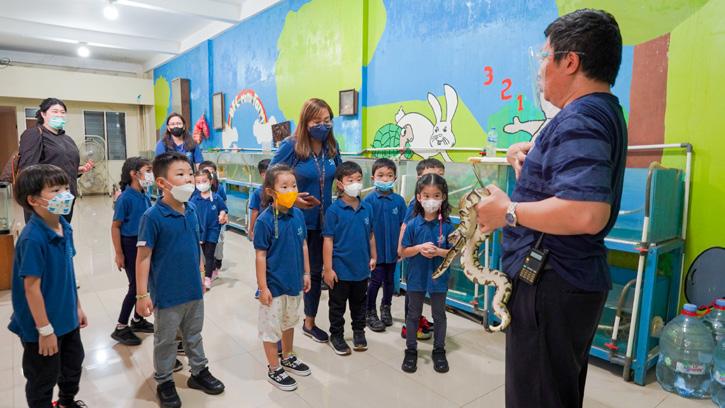

K3 students had fun seeing, observing, and interacting with different kinds of animals, such as rabbits, tortoises, porcupines, otters, snakes, and many more. They had the chance to carry, feed, even give a bath and take a photo with the animals.

This visit gave the students memorable hands-on opportunities to learn about various animals and gain more knowledge than what they could learn in the classroom only. This field trip facilitated the K3 students also to develop their sense of curiosity, build their curious minds and explore the world around them.
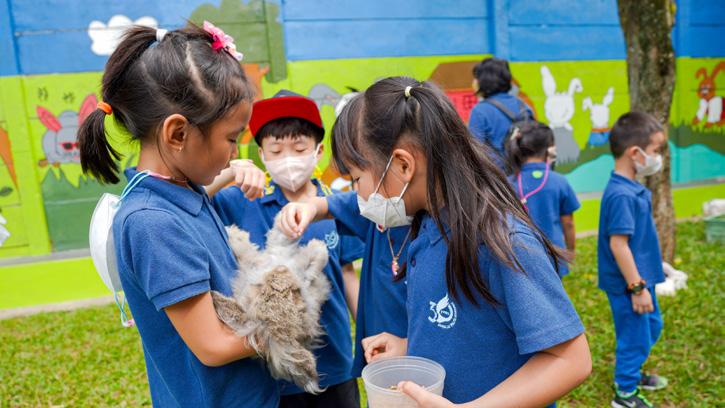
4
Kindy 3
by Miss Savannah McKinnon
How The World Works
Our 4th unit, How the World Works, is always a favorite in first grade. Students get to learn about different habitats and animals around the world. They begin by researching environments through videos and observations. Then using what they have learned each week, they were able to make a new craft or art project reflecting the habitat. The culmination was a group project: dioramas of the habitats. Students worked in groups using a variety of materials such as paper, paint, clay and popsicle sticks to create a visual display of one of the habitats they learned about throughout the unit. Our first graders have grown in their understanding of how the world works and the beauty throughout creation!




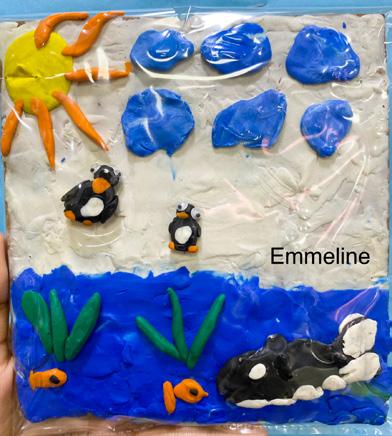

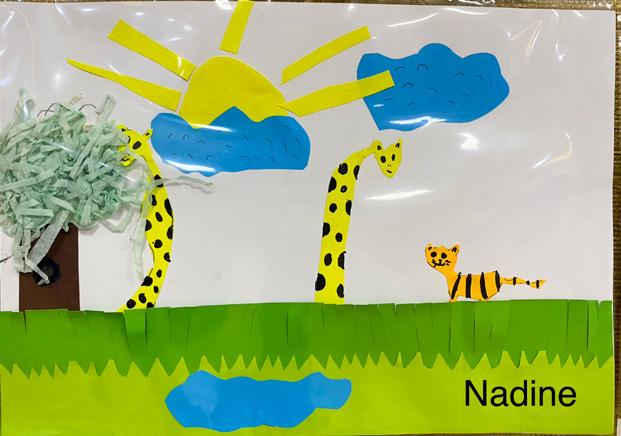



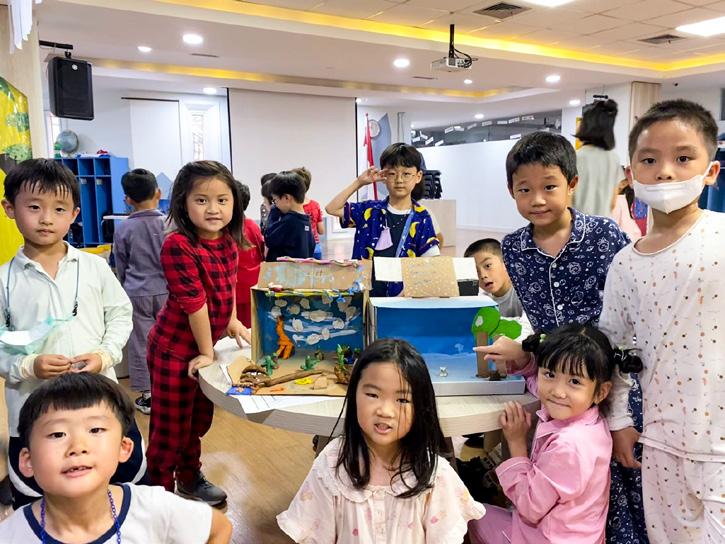
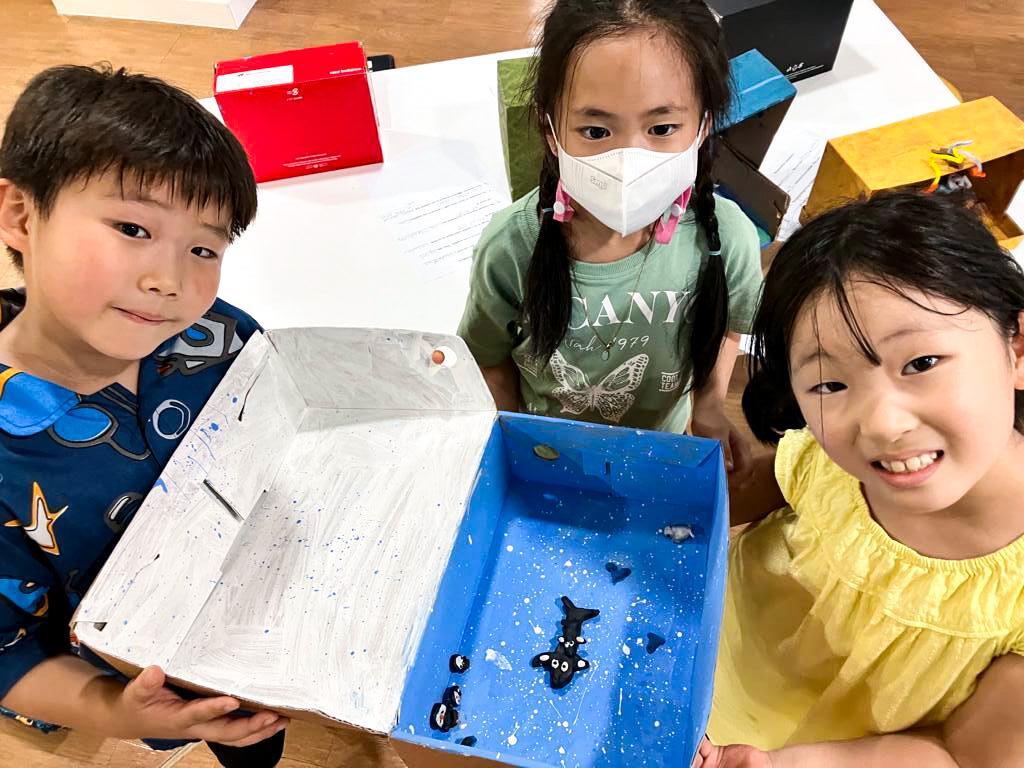
1
Grade
5
Grade
Baked With Love






6

In John 13:34, it says “A new commandment I give to you, that you love one another: just as I have loved you, you also are to love one another”. Last February 14, our grade 2 students had their Mission Service Learning (MSL). The students held a bake sale where they baked and sold cookies, cupcakes, chocolates, and so much more during Valentine’s Day. All the money they collected will be used to buy different supplies Sang Timur might need. Sang Timur is a special school where students with disabilities attend. On one of our field trips, our grade 2 students visited Sang Timur and spent time with the students there through play and crafts. We hope that through this event, our students were able to share God’s love with others through some yummy baked goodies. 2
by Miss Ella Foronda
by Miss Esther Bae
What’s up
Grade 3!
In grade three, we learned the importance of passing on family traditions and making a new tradition to pass on to their children, such as going to church every Christmas Eve to pray and worship. Another is stopping traditions. For example, stop giving offerings to our ancestors because we shall not bow to any other gods but God. The students understand and act by applying what they are learning to their lives. It is encouraging to see how they are making active decisions to become better and do what is right in God’s eyes.






On that note, students are also learning the effect of what the past has had on the future. For example, in this unit, students learn about wars and how one action and culture affected the other. The discussion helps them know what needs to be changed and how to prevent it from happening by looking back, reflecting, and taking action to make changes for the better. Students expressed their understanding in either a quilt or armour and presented it to their class. It was encouraging to see how the students knew just what they want to pass on to their future generations.

3
Grade
7
Maintaining Cultural Diversity

“How We Express Ourselves” was an exciting unit as we explored how people communicate culture and diversity through art. The Fourth graders learned different properties that were used in different forms of art. They also discovered that people designed artistic expressions to fulfil a purpose. Moreover, our students learned that it is important to maintain traditional art forms. They have realized that many art forms are dying out as young people are more interested in digital entertainment and global trends.
Our students had the opportunity to listen to several guest speakers who shared their traditional art forms from different countries: Mrs. Shoko, Ms. Lina Kim, and Bapak Michael Hutagalung. We also visited the Batik Museum in Taman Mini Indonesia Indah. Our students were amazed at the different kinds of batik patterns in the museum. After viewing the batik collections at the Batik Museum, the students learned how to make batik using canting and hot wax.



Having listened to the invited guest speakers and the field trip, our students were inspired to suggest some possible ways they could participate in preserving their traditional arts. Hopefully, their actions can create ripples of awareness to invigorate the traditional arts while we celebrate the beauty of the diverse cultures and the creativity God has given us. What an incredible journey of learning!

4
8
Grade
by Ibu Irene Tjandramihardja
Comments from the students

I saw different kinds of batik patterns and materials, as well as the tools people use to make the batik, such as the cantings and stamps. I had the experience of making batik using some hot wax. It was difficult to make batik using a canting because the hot wax kept dripping on the cloth. If you make a mistake, the cloth will surely look bad. Now, I really appreciate people who make batik using a canting.


When I arrived at the museum, the tour guide helped the students and teachers see the batik collections. There were a lot of batik patterns from different provinces in Indonesia. The variety of batik patterns and colors amazed me and made me realize that Indonesian culture is rich. The building was not big, but the museum was nice and unique. I also made my own batik with some hot wax and a canting. It was hard to master how to make batik. What a wonderful journey to learn more about batik!
In the “How We Express Ourselves” unit, I made a brochure about Hanboks (Korean traditional costumes). I chose to learn more about Hanboks because not many young Korean people like to wear Hanboks these days. In my opinion, it is important for Koreans to love these beautiful and unique traditional costumes. I suggest that young Korean people are encouraged to wear Hanboks. We can design the Hanboks using modern patterns so that young people would like to wear them.
Chelsey – Field trip to Batik Museum
Gahyun
9
Edwardo – Field trip to Batik Museum
The “How We Express Ourselves” unit is an interesting unit because we had to learn about different cultures from different places. Another fun thing about this unit was that we had to choose a specific traditional art form and research it for our summative assignment. My summative project was about batik. I chose batik because I thought it was an interesting topic. Batik has different colors, patterns, and different meanings of the patterns. Nowadays, teenagers like wearing fashionable and trendy clothes rather than wearing batik. That’s why it is important to preserve batik. We need to maintain this art form alive as part of the Indonesian culture.


Weston
I really liked this “How We Express Ourselves” unit as I got to learn about different cultures and their art forms. The fact that I had to make my own brochure was really exciting. My summative project was about “Rangoli”. “Rangoli” is a form of decorative arts that is drawn on the floors or the entrances of Indian homes. “Rangoli” is made of a mixture of materials, such as rice flour, sand, beans, or flower petals. As I belong to the young generation, I would like to preserve this art form as part of the Indian culture. I would keep practicing how to make “Rangoli” so that I can pass it on to my children in the future.
There were a lot of interesting things that I learned in this unit, but one of the most interesting was getting to know more about different cultures, traditional artifacts, musical instruments, and how to preserve them. For my summative, I decided to talk about “Gendang” because it is an important Indonesian musical instrument that many young people may not realize. The young generation may think that “Gendang” is old-fashioned or not too trendy. One reason why it is important to preserve “Gendang” is because “Gendang” is used to signal the beginning, transitions, and the end of a gamelan orchestra. Without the sounds of “Gendang”, the gamelan orchestra will sound incomplete. My idea to preserve “Gendang” is to make our Junior School Gamelan Orchestra performances more often so that the students can be inspired to play “Gendang”.
 Kiara
Kiara
10
Anaya
by Ibu Elika Wirawan
Everywhere! Here, There,


Grade 5 students opened Quarter 3 by completing our “Where We are in Place and Time” unit on human migration. Students worked hard researching one specific migration story of their choice, specifically answering the Lines of Inquiry that they have collaboratively created related to function, responsibility, and change. After a couple of weeks of in-depth research, students prepared for a mini exhibition where they got to showcase their work and knowledge to Grade 3 students.
For the exhibition, students displayed their research on impraboards in creative yet organized ways. They got to practice their skills of evaluating, summarizing, and paraphrasing as they turned their lengthy research into easy-to-read bullet points of important information to include. During the exhibition itself, students practiced their communication skills as they invited different groups of Grade 3 students to their ‘booth’ to verbally explain and elaborate on their boards.




In English, students connected to the Unit of Inquiry by presenting their research through informational essays. They learned to organize their research and answer the three Lines of Inquiry through a five-paragraph essay where they focused on creating clear points as well as providing substantial explanation and researched evidence for each point. This activity allowed them to continue practicing writing in an MLA-approved format. Attached below are QR codes to separate blogs for 5A and 5B where students have uploaded their essays.
Overall, this was an eye-opening unit with a closing activity that was exciting and appropriately challenging. Please enjoy some snapshots from our mini exhibition and their essays from this unit!


11
5
Grade
Snapshots of Students' Essays
Grade 6
ARISE, SHINE!
The Grade 6 Exhibition is the culmination of the students' PYP experience. Students have spent over eight weeks inquiring into a topic, conducting research, field trips, and interviews, attending mentor meetings, and taking meaningful action.

The journey was not without its challenges. Students faced the pressures of meeting deadlines, being flexible when plans did not work, and overcoming setbacks. They applied their Learner Profile attributes and Approaches to Learning to help them complete their weekly tasks.
Here are some of the student's own words about their exhibition experience:
One of the things that I've really enjoyed was creating the music video, teaching my students hip-hop dance, and meeting my mentor! The students loved it and supported me. The challenging part was making the lines of inquiry. It taught me that God is always in control and that the things that happen to us are all part of God's plan.
- Shana
by Mr. Eduardo Diaz
I really enjoyed working with my group for the staging presentation and meeting with my mentor. It was interesting to learn about the rate of people who are deaf, what they do in their daily life, and how they are often discriminated against. This unit has taught me that even when people are different, they are all equally the same in God's eyes.
- Sherny
As I constantly reflected and corrected my research questions and LoIs (lines of inquiry), there was a moment when I was overwhelmed by the thought that everything I had chosen was wrong. However, my teachers and mentors led my mind on the right path and encouraged me.
- Songwon
The best part of the Exhibition was that I was able to pick my own topic. My project was something I could enjoy and wasn't forced to do. The hard part was managing my time because I had to prepare for other lessons, which made it hard if I wanted to research or continue to work outside of school.
- Deifilia
The fact that the power of nutrition can impact the whole human body mentally and physically amazed me. I learned that anyone can be a world changer if we have the courage to pursue our dreams.
- Sienna
We are very proud of the grade 6 students for completing their Exhibition unit, and we pray that their journey has been rewarding for them and a blessing to share with you.
A special thanks to the mentor-teachers, without whom we could not have done this. Thank you for your time, patience, and willingness to support the students.
PYP Exhibition was held on March 7 and 8 in the grade 6 pod. You are invited to view the Exhibition LibGuide at this link: https://library.sph.edu/lv/pyp/exhibition/2023/ov erview.

12
Celebrating Diversity: towards international-mindedness
Writing this edition's topic on international-mindedness, I googled the keyword "international-mindedness". To my surprise, I got over 9,7 million results in 0.41 seconds. The fact implies that this coined word has been getting more and more attention these days.
What about you? When you read the title of this article, what came to your mind? What is international-mindedness? What makes people internationally minded? Does educating children in an international school shape them into individuals with international-mindedness? With the 14 nationalities at SPH-Lippo Village, what is the potential harm and advantage to each culture? In this edition of Eagle Eye, we will discuss the definition of international-mindedness and how parents can foster the development of international-mindedness at home.
Defining international-mindedness
The IB claims that "International-mindedness is central to the IB mission and is a foundational principle to its educational philosophy; it is at the heart of the continuum of international education." (IBO, 2020)
The IB quoted Oxfam and UNESCO's definition of international-mindedness. Internationally-minded people appreciate and value the diversity of peoples, cultures, and societies in the world. They make efforts to learn more about others and to develop empathy and solidarity towards them to achieve mutual understanding and respect (Oxfam 2105; UNESCO 2015).
Developing international-mindedness
Students in international schools reap the benefit of being immersed in a learning environment with students and teachers from different countries. Interactions with cultures other than theirs enable international students to experience firsthand how to deal with cultural diversity. However, it does not mean that not being in an international school setting makes it impossible for an individual to possess the quality of an international-minded person.
is a competent communicator is open-minded and knowledgeable is a caring and principled thinker uses his or her curiosity and research skills to inquire about the world thinks and reflects critically about opportunities and challenges
The IB (2020) wrote that an internationally-minded learner has the following quality: (Boix Mansilla and Jackson 2011; Oxfam 2015; Singh and Qi 2013; UNESCO 2015).
takes action for positive changes (for example, to promote intercultural understanding, foster caring relationships, to care for self and others) takes risks to further self-development and understanding of others
Does the list of characters above ring a bell? The characters described by the IB may remind you of the learner profile attributes and the approaches to learning (ATL) skills. We discussed those two in the previous editions of this PYP Column.
PYP Column by Ibu Ratna Putri
13
• • • • • • •
At home
Parents and adults at home can foster the development of international-mindedness. Some ideas may include the following:


Encourage your child to be aware of their own feelings and attitudes towards others, being sensitive to the needs of others: How do you feel about it? Did you do the right thing? How can you help? How can you fix the problem?
•
• Practice listening to other perspectives without making judgment: Listen until the other person finishes making their points. What do you think? Do you agree with their idea? If you don't, how will you express your agreement respectfully?
Resolving conflict through dialogue: What is the problem? What causes the disagreement? How can you talk it out?
•
Taking responsibility for their own actions: What's the consequence of your action? How do you deal with it? What's your responsibility?
So what?
•
• Playing or socializing with different students, including those with different nationalities: How are you different from your friends? How are your friends different from you? How do you show mutual respect?
•
Sharing your own cultural traditions and stories: How can you continue the development of your mother tongue? How can you keep your home country's traditions although you are away from your home country? How can you introduce folklore from your home countries? How can you share your values and traditions with the school community?
To conclude, I want to quote what Carolyn Savage wrote about international mindedness, "Put simply, international mindedness means understanding, respecting and valuing different cultures, embracing diversity and knowing that different perspectives have a great deal to offer."
Diversity challenges us to get out of our comfort zone of uniformity to see different colors of the rainbow that enrich our lives. Being international-minded means we still have our cultural identity instead of trying to be the same as others. Celebrate diversity, moving towards international-mindedness!
BIBLIOGRAPHY
"Primary Years Programme: The Learning Community." 29 May 2020, https://resources.ibo.org/pyp/works/pyp_ 11162-51464?lang=en&root=1.6.2.16. Accessed 20 Feb. 2023.

Savage, Carolyn. "International Mindedness - Teachers Are Talking about It, but What Exactly Is It?" HuffPost UK, HuffPost UK, 3 Aug. 2017, https://www.huffingtonpost.co.uk/carolyn-savage/international-mindedness_ b_17585366.html.

14

























































 Kiara
Kiara
























